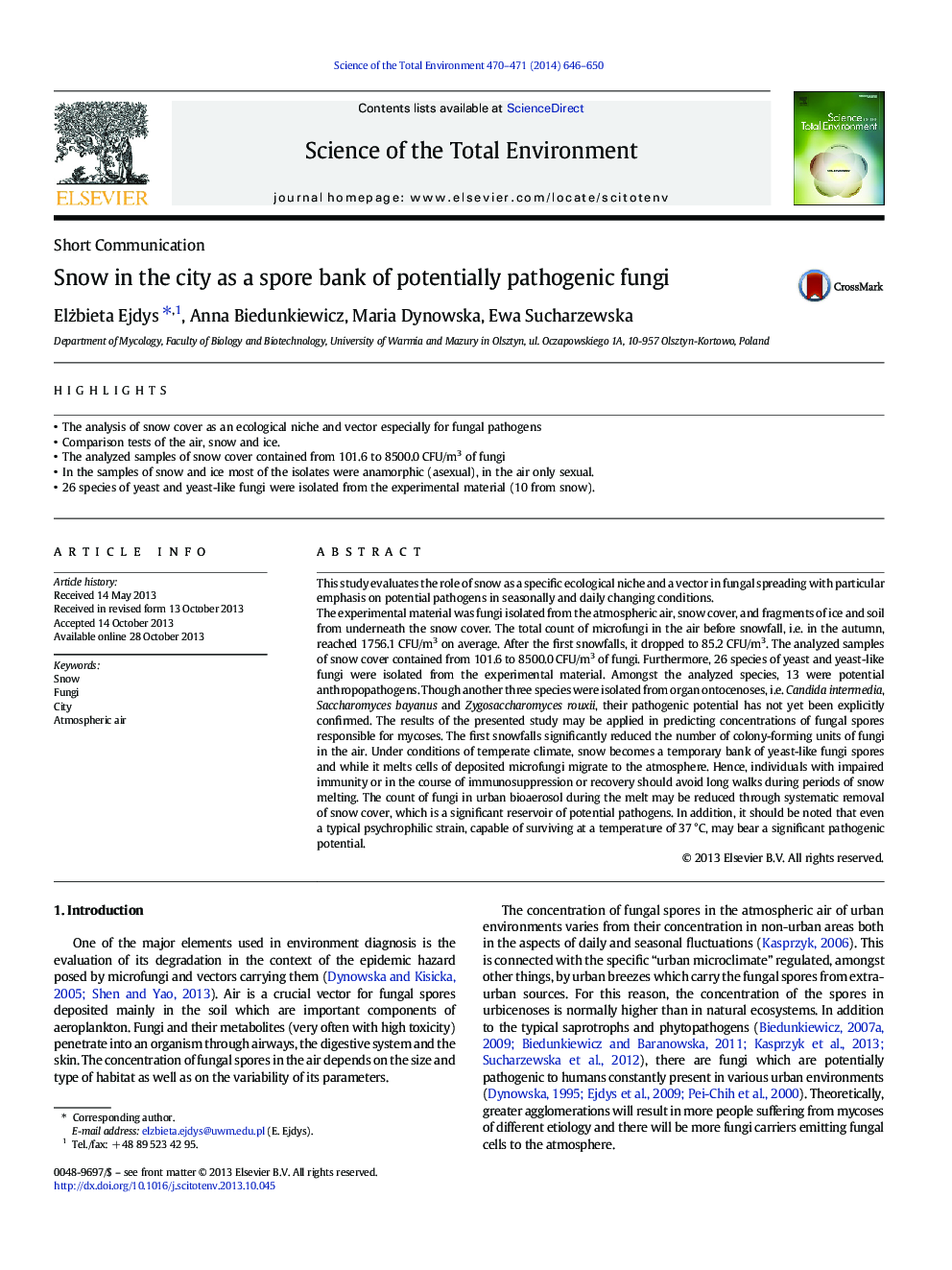| Article ID | Journal | Published Year | Pages | File Type |
|---|---|---|---|---|
| 6331459 | Science of The Total Environment | 2014 | 5 Pages |
Abstract
The experimental material was fungi isolated from the atmospheric air, snow cover, and fragments of ice and soil from underneath the snow cover. The total count of microfungi in the air before snowfall, i.e. in the autumn, reached 1756.1 CFU/m3 on average. After the first snowfalls, it dropped to 85.2 CFU/m3. The analyzed samples of snow cover contained from 101.6 to 8500.0 CFU/m3 of fungi. Furthermore, 26 species of yeast and yeast-like fungi were isolated from the experimental material. Amongst the analyzed species, 13 were potential anthropopathogens. Though another three species were isolated from organ ontocenoses, i.e. Candida intermedia, Saccharomyces bayanus and Zygosaccharomyces rouxii, their pathogenic potential has not yet been explicitly confirmed. The results of the presented study may be applied in predicting concentrations of fungal spores responsible for mycoses. The first snowfalls significantly reduced the number of colony-forming units of fungi in the air. Under conditions of temperate climate, snow becomes a temporary bank of yeast-like fungi spores and while it melts cells of deposited microfungi migrate to the atmosphere. Hence, individuals with impaired immunity or in the course of immunosuppression or recovery should avoid long walks during periods of snow melting. The count of fungi in urban bioaerosol during the melt may be reduced through systematic removal of snow cover, which is a significant reservoir of potential pathogens. In addition, it should be noted that even a typical psychrophilic strain, capable of surviving at a temperature of 37 °C, may bear a significant pathogenic potential.
Keywords
Related Topics
Life Sciences
Environmental Science
Environmental Chemistry
Authors
Elżbieta Ejdys, Anna Biedunkiewicz, Maria Dynowska, Ewa Sucharzewska,
